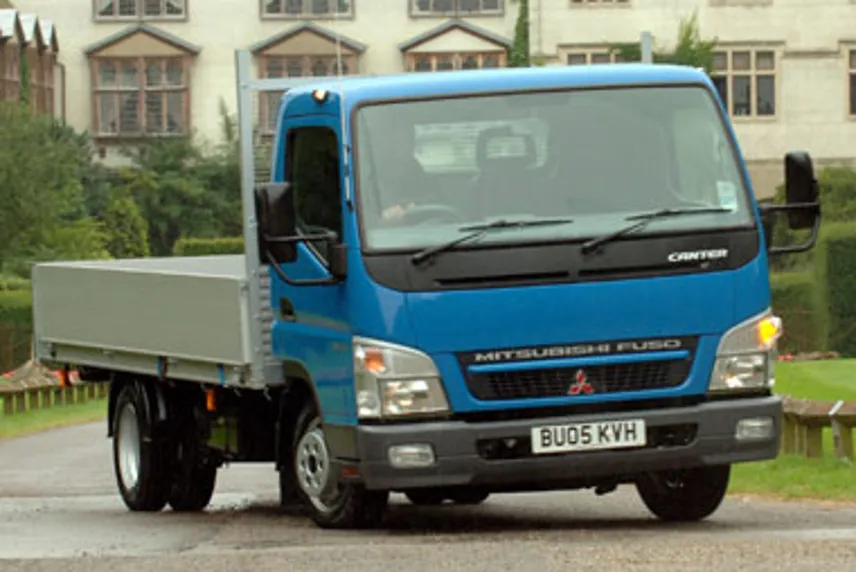Review
I joined a party of journalists at Coombe Abbey near Coventry for a first drive of the new Canter.
Here’s how we fared...
Outside
My first reaction on spying the new 3.5-tonne Canter was: ‘That’s never a 3.5-tonner!’
It looks sturdier and bigger than its van counterparts – mainly because it is, in fact, a 7.5-tonner scaled down – and is for all the world a pukka heavy commercial vehicle.
That’s good news for fleets with some serious shifting to do, but there must be a temptation to overload a vehicle like this and care must be taken instructing drivers on its payload limitations.
The good news, of course, is that operators don’t have to bother about tachographs, drivers’ hours and all those other annoying trifles that heavy goods vehicle fleets have to worry themselves with.
In the front
Pull a few levers and the whole cab tips forward to reveal the engine compartment underneath, just like real trucks.
It’s a neat trick and allows easy access to the dirty bits if necessary.
The cab looks 100% better than the old one.
It’s a lot more light and airy, the dash is more functional and stylish and there are more cubby holes (although nowhere for white truck man to put his precious two-litre cola bottle).
The plastics in general look a bit cheap and tacky, but everything is of the wipe-clean variety and feels solid enough.
The driver’s seat is best in class.
You dial in your weight (in kilograms) and the clever little blighter decides for itself how much ‘give’ and support you are going to get.
It hisses up and down gently to iron out the worst bumps in the road and is, in short, a minor miracle.
I was so impressed that I jokingly asked those very nice men from Mercedes-Benz if I could get some for my living room.
On the minus side, those optional airbags get a big thumbs down and the CD player was sadly the ‘cooking’ variety and full of horrible fiddly little buttons.
It means the driver is likely to take his eyes off the road for valuable seconds while messing around with it.
The double-cab version features a row of four seats behind – and there is no shortage of legroom either.
In the back
Everything is as sturdy and solid as you’d expect in our test models, which included a platform truck and a box van.
Twin rear wheels come as standard and the dropside has a low loading height.
Fleets ordering a Canter will be offered a bewildering array of options so will have to do a few sums to make sure they get one that is just right for their particular purposes.
On the road
It's no idle boast that the new Canter is quieter. For a vehicle of this size, it’s almost uncanny.
My co-pilot and I were able to converse in hushed tones even at motorway speeds, so some serious sound-proofing has been undertaken.
Meanwhile, the clutch is on the heavy side while the power steering is on the light side, although we soon got used to it after a few junctions.
The Canter is wonderfully agile for its size and has an excellent turning circle, as we discovered when we went wrong on our test route and had to do an about-turn.
Our only serious criticism was with the notchy gearchange.
The four test models we tried out ranged from OK to awful, but they were all new vehicles so maybe that graunchiness will abate over time.
Verdict
It’s not often that we get both a new model and a new marque in the UK, so let’s give a good old British welcome to Fuso.
The new Canter is chunky, stylish and very drivable, despite that dodgy gearchange, and I’d have no problems as a driver spending my working life within its confines.
Just remember where to buy it though – walk into a Mitsubishi showroom and ask for a Fuso and you may be greeted with a blank look.
















